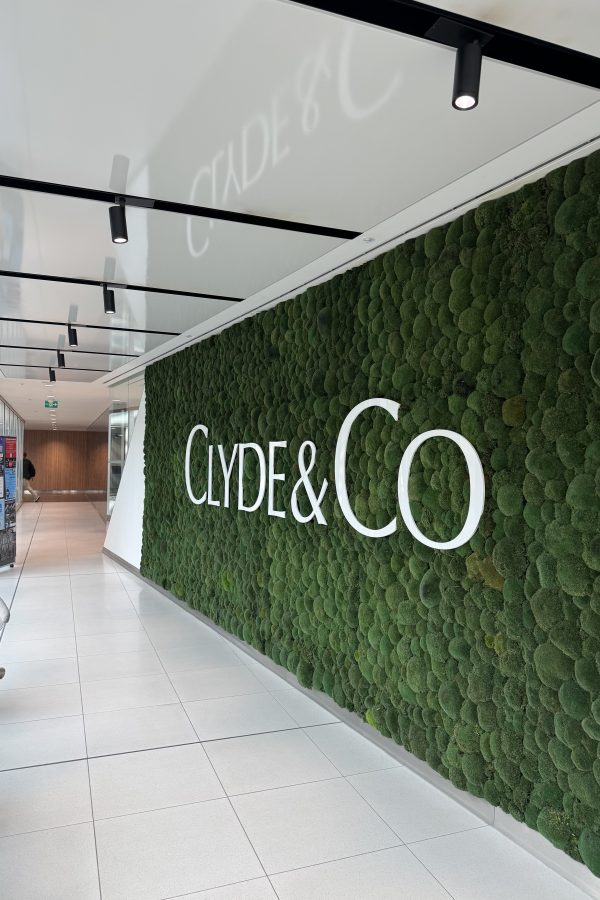Theories abound on how the design of the workplace will change as we adjust to a post-pandemic world. In sectors steeped in the value of hierarchy, will we see a more fluid approach? Peter Crush investigates
As a former CIO at the London School of Hygiene and Tropical Medicine, Jon Faulkner knows a thing or two about hierarchy. Academia is built around it, and thanks to being surrounded by it, he knows it wouldn’t suit his 60-staff digital consultancy, Domain7. “We’re very ‘flat’,” he says. “It’s because we want greater levels of inclusion around decision making. We feel not being too hierarchical creates more of an inclusive culture.”
Notionally the business has four levels – CEO, executive team, discipline teams and team members. But if anything, he explains the firm will likely get flatter still because of one thing: COVID-19 and the working from home it causes. He says: “Hierarchies previously reinforced by positional structures have evaporated and become invisible by remote working. Remote reduces the height of our business. Very few roles won’t be collaborative, so we’re now on a journey to see how we can move personal achievement away from vertical progression, and by actual contribution instead.”
Faulkner isn’t the first to draw comparison between the demise of the office and its democratising impact on work. Proponents of flat structures (including those that espouse the ultimate in non-hierarchical set-ups – a holacracy), are predicting another shift in how people develop their own careers: “Flatter firms are self-managing firms,” says holacracy practitioner Lizzie Benton, founder of Liberty Mind. “They give staff the ability to define their own career path, with career progression based on knowledge progression. It could be an exciting time ahead. Teams have the prospect of being compensated more by their capacity to learn and become a specialist, rather than by just simply ‘managing a team’.” It all sounds Utopian, but could this view now become so commonplace that hierarchy as we know could soon end?
Shifting sands?
Law firms, steeped in partnership structures and tradition, are arguably some of the biggest fans of hierarchy. Shoosmiths HR director Louise Hadland argues that just because the way people do their work is changing right now, it doesn’t always follow that the structure behind it will too.
“We have three responsibilities to our people: ensuring their wellbeing., their competency and skills, and their cohesion in the firm,” she says. “And competency and skills remain a priority. It’s what we sell to clients, and it takes time to develop, and it’s an assurance to our clients.” She adds: “Hierarchy is driven by a need to demonstrate we will meet our clients’. Hierarchy recognises the skills people need and so clients can see who they are buying. So our hierarchy won’t really flatten.
“Unfortunately, what I sense will happen to hierarchy is not much,” says Alan Watkins, neuroscientist, TEDx speaker and author The HR (R)Evolution: Change the Workplace, Change the World. “Those firms that were already hierarchical – law firms, and public sector organisations in particular.”
Watkins argues that the process of working at home, and being on the receiving end of mass, distributed messaging, creates a mirage (rather than a reality), of flatness, when really the way an organisation is run hasn’t changed at all. He says: “Those were already hierarchical will stay that way, and those that were already flat will carry on being flat.” That said, however, he also adds: “What is up for debate though is the vast middle ground between these two extremes.”
Management and monitoring
Gartner’s recent Reimagine HR research suggests that companies who do reduce layers connect with employees and see higher proportions of highly engaged employees (60% vs. an average of 40%), but Brian Kropp, its chief of HR research is skeptical too: “Remote working can actually intensify hierarchy because workers are more likely to ask their manager for answers than do what they would have done in the office – which was ask a colleague,” he says. “More than a quarter of companies we surveyed since March 2020 have increased spend on performance management IT.”
He adds: “I sense increased passive monitoring will be the clear result of coronavirus. Worse still, is that while we all claim to believe in outcomes-based working, remote working doesn’t as easily reveal idea generation, so managers will revert back to traditional performance measures. Hierarchy will effectively creep back in.”
James Berry, assistant professor at the UCL school of management believes that most remote workers are still working to structures that existed prior to COVID. He says: “Things might feel flatter because things happen on Zoom, but the chain of command is still there. In fact there is an argument for suggesting we need more middle managers, not less, because statistics already show that productivity is falling, and more performance oversight – including wellness awareness – is needed because the tail of management has got weaker.”
He adds: “Most firms have already cut layers down to the bone, but what we need to accept is that layers are not a bad thing. Google tried removing them, and soon regretted it. It needed more hierarchy.”
Adding structure
One sector where hierarchy is endemic is the care sector, and at Sunrise Senior Living UK and Gracewell Healthcare, its HR director Sharon Benson for one says if anything, new layers will be added as a result of COVID-19: “We now feel our management has to much more structured,” says Benson. “We need to think about spans of control that prevent over-work from people, and we’ve decided we’ll be creating new leadership roles – a title between leader and carer – that is closer to the front line.” She adds: ‘We feel we need to give more coaching and supervision. Being too lean would be unproductive right now.” Benson says applying more hierarchy is likely to raise the day-to-day experience of staff, as well as provide opportunities for them to move up and progress their careers, so for her, an extra layer is a win-win situation.
But according to Ben Hewlett, partner, executive search firm, Granger Regis (recruitment itself being quite a hierarchy-led, and perpetuating industry) – there could be one driver that sees hierarchy lessen: “Maybe it’s less remote working that has a bearing, but the fact we’ll be seeing jobs shed across all sectors,” he says. “This is likely to cause flattening out at the bottom, as roles are scrutinised more and HRDs decide how roles can maybe be merged. The tide of opinion is changing. Organisations can clearly see that unnecessary layers get in the way of decision-making.”
Perhaps there is reticence to shed layers because doing so would fundamentally change the way career progression and performance is managed. De-layering requires new strategies for managing ‘advancement’ in non-career ladder ways. “Middle management is undoubtedly going through some angst,” agrees John Williams, CEO of the Institute for Leadership and Management. “And I think traditional hierarchy is under threat from the short-term impact of COVID-19 – mainly because it’s creating long-term changes to work.”
“The trend is clearly that leadership per-se needn’t reside at a particular level, and that it should exist everywhere, but I suspect it will take time for this to really happen,” he adds. “Those companies that want people to come back to offices will gravitate back to the old status-quo. It’s the physicality of a building that supports hierarchy. It’s when it’s removed that it can be questioned.”
Ladders or paths?
Nevertheless, he and others are optimistic that a transition to ‘flatness’ can be made. “What HRDs need to understand is that you don’t need career ladders if you have career paths. The latter can be flat and provide just as much staff engagement and sense of development – but only if managed properly,” says Williams. Reward and recognition will need to change, and Faulkner agrees. But he says there are team members in his business that are paid more than executives for precisely the value they add rather than the position they’ve reached.
At Granger Regis, where Hewlett says efforts are being made to flatten the traditional account handler, account manager, team manager paths, progression and reward comes through by meeting certain net promoter scores (65+) instead. When Benson worked for digital retailer, Studio Retail, the organisation had five levels, but applied Towers Watson’s grading and progression model to see there were different levels of pay.” She says: “Pay levels substituted the much fewer actual ‘steps-up’ in vertical advancement.”
But is changing to this really so easy? Some say managers must be prepared for the long-haul. “If they’re going to remove hierarchy, where managers must concentrate effort, is preventing biases that hinder development still,” says UCL’s Berry.
He adds: “Progression tends always to be linked to physical proximity. Those around leaders overhear ideas, and so can be the first to put their hands up to new opportunities. Non-remote workers are the people that always have an advantage in being able to craft their own jobs and progression better than those who are external. So flat organisations have to be able to map progression better. Promotion will have to revolve around change of responsibilities rather than titles.”
Task-focused
Self-confessed “hierarchy fan” and CEO of PeopleGoal, Nik Lygkonis, says many businesses are battling with the dilemma of more distributed power by giving more autonomy to staff, and creating clusters of teams that convene and then disband, before converging again for the next task. “This is a way of providing staff a sense of advancement and contribution while still staying flat,” he says.
Dr Michal Izak, reader in management at the University of Roehampton adds: “When working ‘flexibly’ without a direct supervision, it is likely that home-working will relax organisational oversight and eventually flatten the structure. The effects of the pandemic may therefore be more ‘democratic’ with both junior and senior staff working from home, irrespective of company hierarchy “But if home-working employees start to work more intensely, trying to reassert their perceived value to the company, we see the ‘the autonomy paradox’ in action – which is bad for people’s careers.”
So how should organisations approach this dilemma? An intriguing micro-specialism is emerging in the space of company design called organisational network analysis (or ONA). Leading this field is Alan Watkins, CEO of Complete. He says: “Flat structures create chaos. But neither is hierarchy always the answer too.” He says: “What’s more accurate is to say the way organisations work hardly ever resembles the official organisation chart. Most companies actually self-organise, and create their own sub-networks of influence and power. The key is understanding where these reside, and amongst whom. Managers need to know what’s going on in the ‘system’ first.”
“A beautiful glistening cobweb”
Shoosmith’s Hadland confirms that despite being hierarchical, there are multiple other hierarchies and networks that exist, and they are networks she wants to promote: “We have our innovation teams, BAME networks and others,” she says. “There is what I call a beautiful glistening cobweb of other groups, and during lockdown we certainly made sure we created structured spontaneity between them for the very reason of giving people different experiences and giving them access to new ideas of people.”
Watkins argues that ONA creates better links between organisational and people development, but right now, many believe hierarchy could go one of two ways – and this is yet to be defined.
Williams believes one of two things will happen: “The first is that trust will emerge as the underlying and basic foundation upon which organisations will do their work, and empower their people; while the second is that trust will disappear and organisations will feel a need to do more overt, or surreptitious management. Benson warns that flattening without the “right level of organizational design” will simply take away employees’ career opportunities, which will back fire. No one ever said management was easy, and the post-Covid landscape could prove even more complex to navigate.










